Choosing the right full-suspension mountain bike can transform your ride from a simple outdoor activity into an exhilarating adventure. The Pioneer Mountain Bike from Trifox Bike is an exemplary model that combines high-quality features with affordability, making it an ideal choice for riders looking to enhance their trail riding experience.
Key Features of the Pioneer Mountain Bike
Carbon Fiber Frame
The Pioneer Mountain Bike boasts a full carbon fiber frame (MFM100), offering exceptional strength and lightness. This material is renowned for its ability to absorb shocks and provide a responsive ride, which is crucial when navigating rough terrains. The bike's carbon frame not only enhances performance but also contributes to a sleek and modern aesthetic.
Dual Suspension System
Equipped with a dual suspension system, the Pioneer bike ensures a smooth and controlled ride over uneven surfaces. With 115mm travel, the suspension effectively absorbs bumps, reducing rider fatigue and improving handling. This feature is particularly beneficial for trail enthusiasts who encounter a variety of terrains, from rocky paths to smooth descents.
Shimano M6100 Groupset
The integration of the Shimano M6100 12-speed groupset elevates the bike's performance by providing seamless gear transitions and reliable braking. The hydraulic disc brakes offer superior stopping power, enhancing safety during steep descents and technical trails. The precision of the Shimano components ensures that riders can maintain their momentum without sacrificing control.
Benefits for Trail Riding
The combination of a carbon fiber frame and dual suspension makes the Pioneer bike an excellent choice for tackling diverse trails. The frame's lightweight nature allows for quick acceleration and agile maneuvering, while the suspension system provides stability and comfort. Riders can confidently take on challenging paths, knowing their bike is equipped to handle the demands of the terrain.
Tips for Choosing a Full-Suspension Mountain Bike
1. Frame Material: Look for bikes with carbon fiber frames if you prioritize weight and strength. This material is ideal for serious riders who need a durable yet lightweight bike.
2. Suspension Quality: Evaluate the suspension system's travel and adjustability. A good dual suspension setup will offer better shock absorption and a smoother ride.
3. Groupset Quality: A reliable groupset like Shimano ensures precise shifting and effective braking. This is critical for maintaining speed and control on trails.
4. Fit and Geometry: Choose a bike that matches your body size and riding style. The Pioneer offers multiple sizes, ensuring a tailored fit for optimal comfort and performance.
5. Wheel Size: Consider wheel size based on the terrain you frequently ride. The 29-inch wheels on the Pioneer bike provide better traction and stability, ideal for both climbing and descending.
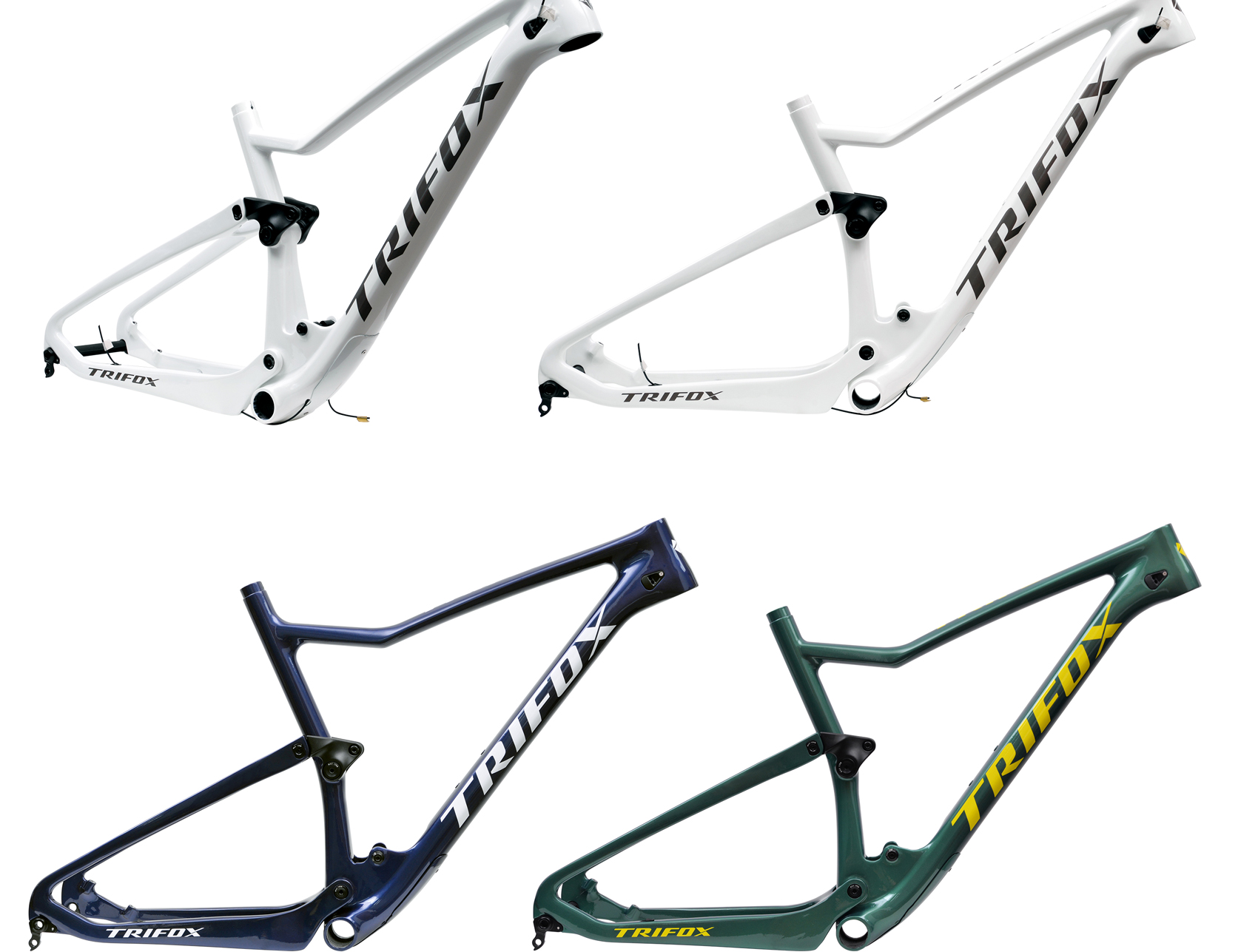
Conclusion
The Trifox Pioneer Mountain Bike is a standout option for riders seeking a priced full-suspension bike with essential features. Its carbon fiber frame, dual suspension, and Shimano components make it well-suited for trail riding, offering a blend of comfort, control, and durability. By focusing on quality components and the right fit, you can find a full-suspension mountain bike that elevates your cycling adventures. Whether you're exploring new trails or refining your skills, the right bike can make all the difference in your riding experience.


Optimizing your ride with an ultra light road bike like the Trifox Ultra Light SF-QR 2.0 involves leveraging its standout features for peak performance.
This bike, crafted from T800 carbon fiber, offers a remarkable strength-to-weight ratio, weighing just 8.6kg. Its lightweight nature enhances speed and agility, making climbs easier and long rides less fatiguing. The carbon fiber construction also improves vibration dampening, offering a smoother ride on varied terrain.
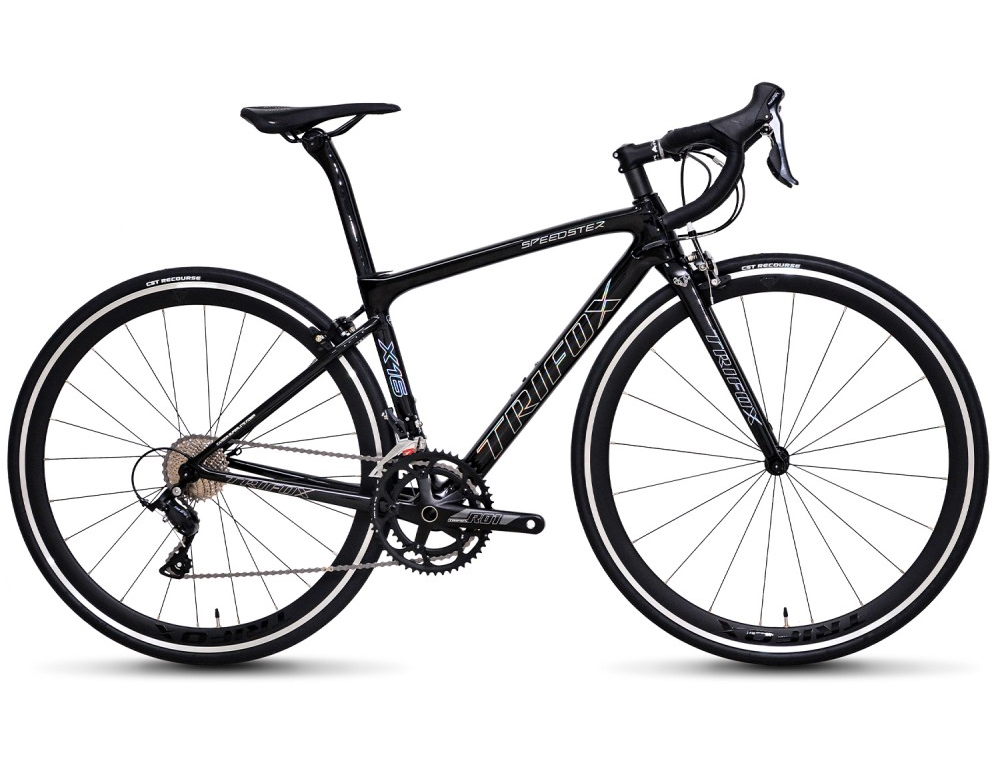
Equipped with the Shimano Sora R3000 groupset, the Ultra Light SF-QR 2.0 ensures smooth and precise shifting across its 2x9 speed setup. This efficient drivetrain allows riders to seamlessly adjust to changing inclines and conditions, maintaining optimal momentum throughout their journey.
Aerodynamic design is another key aspect, with partially internal cable routing that minimizes wind resistance and protects cables from wear. This design not only enhances speed but also contributes to the bike's sleek, clean look.
For optimal performance, regular maintenance is crucial. Check and adjust tire pressure for different road conditions, and ensure the drivetrain is clean and well-lubricated to prevent wear and maintain efficiency. Adjust the saddle and handlebar height for comfort and improved control.
Selecting the right size is vital for comfort and efficiency. The SF-QR 2.0 offers sizes from 44cm to 58cm, catering to riders from 150cm to 191cm tall. Proper sizing ensures better posture, reducing strain and enhancing power transfer.
Using an ultra light road bike like the Trifox Ultra Light SF-QR 2.0 can significantly enhance speed and efficiency, allowing you to enjoy a superior riding experience. By focusing on its features and maintaining optimal settings, you can unlock the full potential of your road biking adventures.
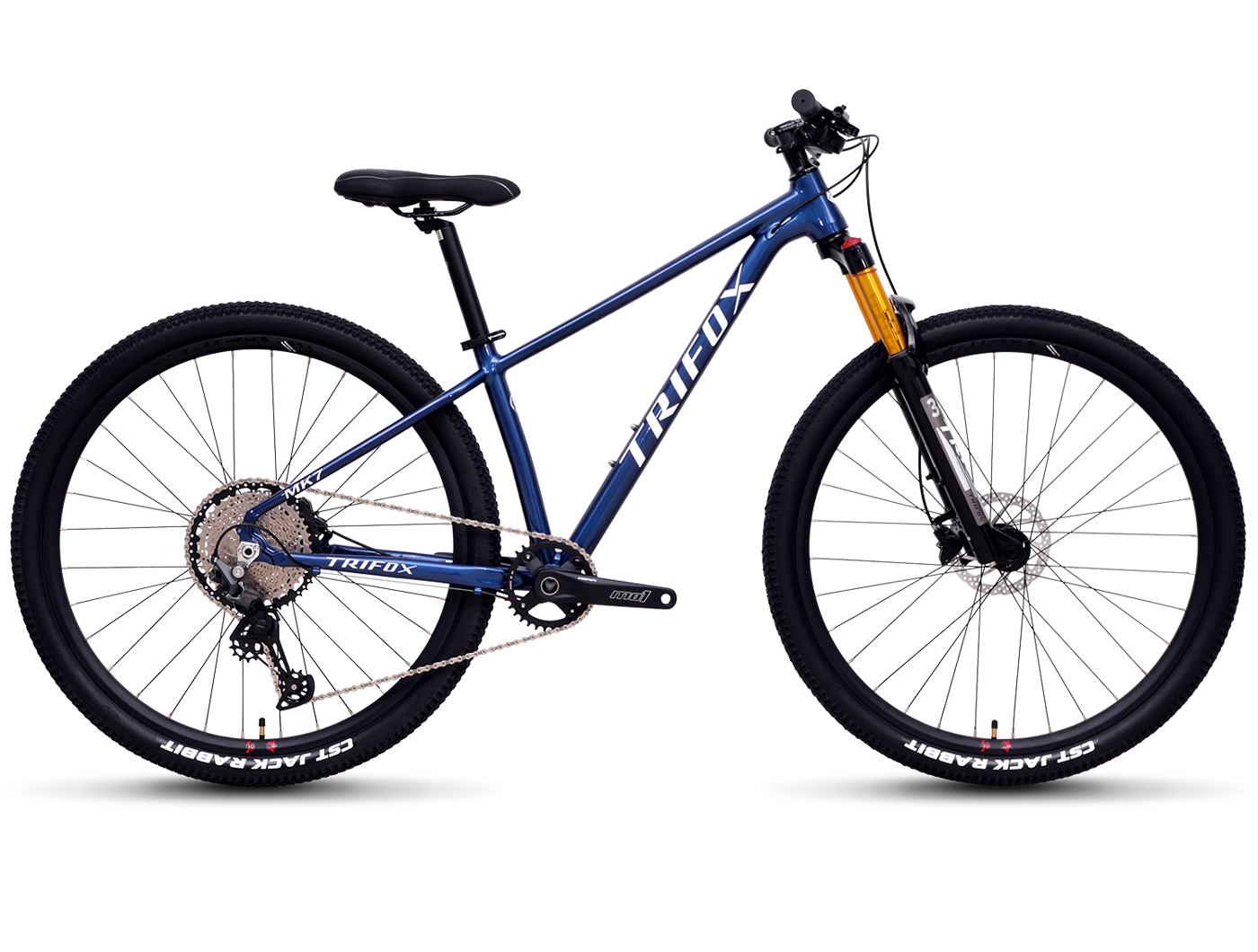
Mastering the trails with your PeakTrail MTB requires a blend of preparation, skill, and the right mindset. Whether you're a seasoned biker or a newcomer to mountain biking, these tips will help you make the most of your trail adventures.
First, equip yourself with the right gear. A helmet, gloves, and protective eyewear are non-negotiable for safety. Consider knee and elbow pads for added protection on rugged trails. Wearing moisture-wicking clothing can keep you comfortable during long rides.
Maintaining your bike is crucial for reliable performance. Regularly check the tire pressure, brakes, and chain lubrication. A well-maintained bike not only performs better but also reduces the risk of mechanical issues on the trail.
Improving your riding skills is an ongoing process. Start with basic techniques like maintaining the right body position—stay relaxed and centered over the bike, especially on descents. Practice braking smoothly and shifting your weight to navigate tight corners and obstacles.
Different terrains demand different handling. On rocky paths, keep your arms and legs loose to absorb shocks. On muddy trails, lower your tire pressure slightly for better traction. Sand or loose gravel requires a steady speed to prevent skidding.
Optimizing your bike settings can enhance your ride. Adjusting the suspension for comfort and control, setting the saddle height for efficiency, and ensuring the handlebars are at the right angle can all make a significant difference.
Safety is paramount. Always inform someone of your route, ride with a buddy when possible, and carry a basic repair kit and first-aid supplies. Knowing your limits and pacing yourself can prevent accidents and ensure a fun experience.
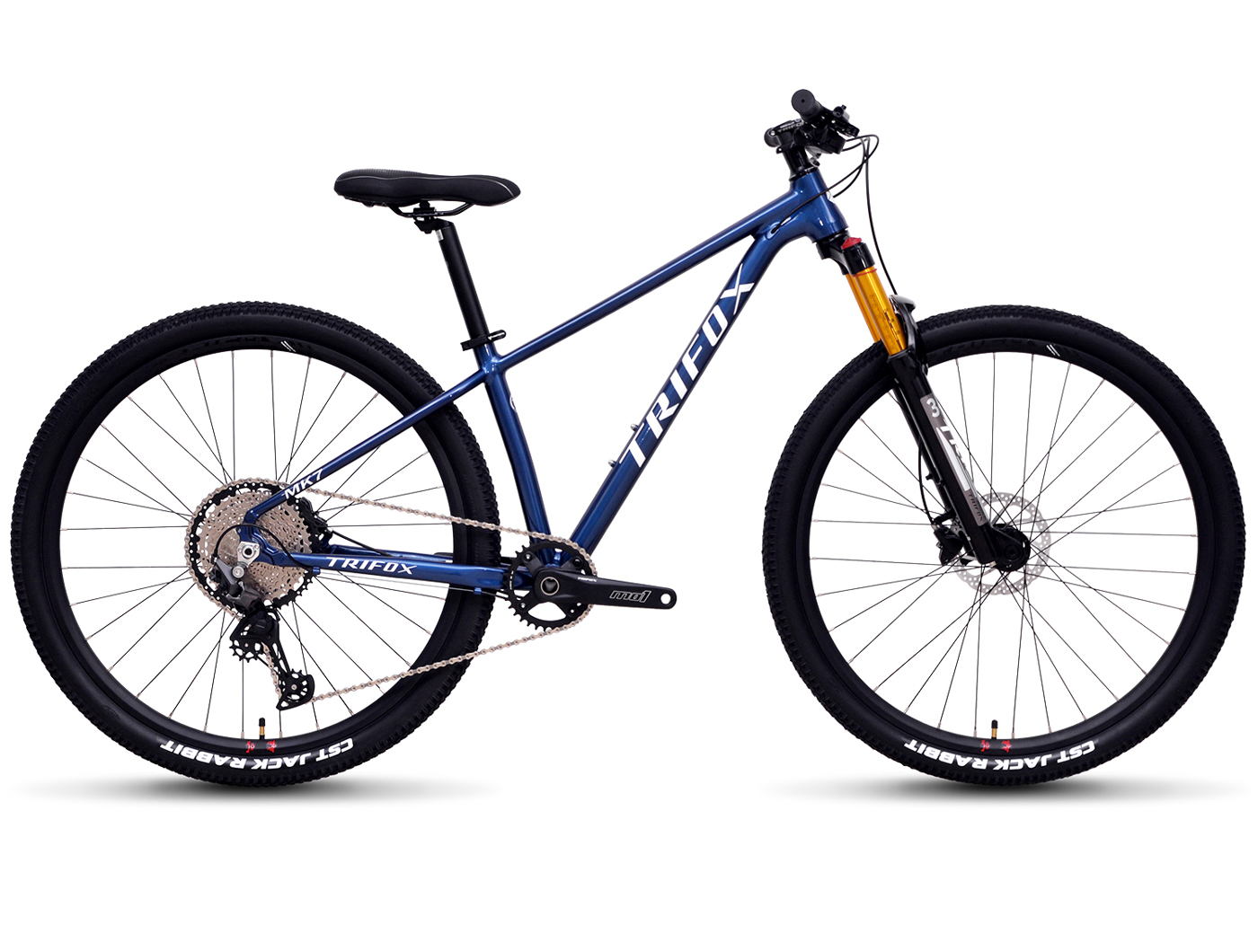
The PeakTrail MTB, with its versatile design, offers an excellent balance for tackling various trail challenges. Its agility and durability make it a great companion for mastering any trail. Embrace these tips, and you'll be well on your way to trail mastery.

Choosing the perfect ultra light hardtail mountain bike for your next adventure involves understanding the key features that will enhance your riding experience.
When considering options like the Trifox SDY20, start by focusing on the frame material. This bike boasts a 29er carbon mountain hardtail frame made from T1000 carbon fiber, which is renowned for its strength-to-weight ratio. The lightweight nature of carbon frames not only makes climbing hills easier but also improves maneuverability on technical trails.
Weight is another crucial factor. The SDY20 weighs approximately 11.5 kg for a large size, making it an excellent choice for riders who prioritize speed and agility. A lighter bike allows for quicker acceleration and less fatigue over long rides, key benefits when tackling challenging terrains.
Drivetrain components are equally important. The SDY20 features a SHIMANO Deore M6100, 12-speed system, which provides smooth and reliable gear shifts. This setup is ideal for adapting to varying trail conditions, giving you the flexibility to maintain momentum whether you're climbing or descending.
Wheel specifications, such as the Trifox Alloy Mountain Bike Wheels and CST 29*2.1 tires, offer stability and control. Wider tires improve traction and handling, crucial for maintaining grip on rough surfaces.
When selecting the right size, consider your height and inseam. The SDY20 offers sizes from S to L, accommodating riders from 150 to 185 cm tall. Ensuring the bike fits well enhances comfort and control, which are vital for a safe and enjoyable ride.
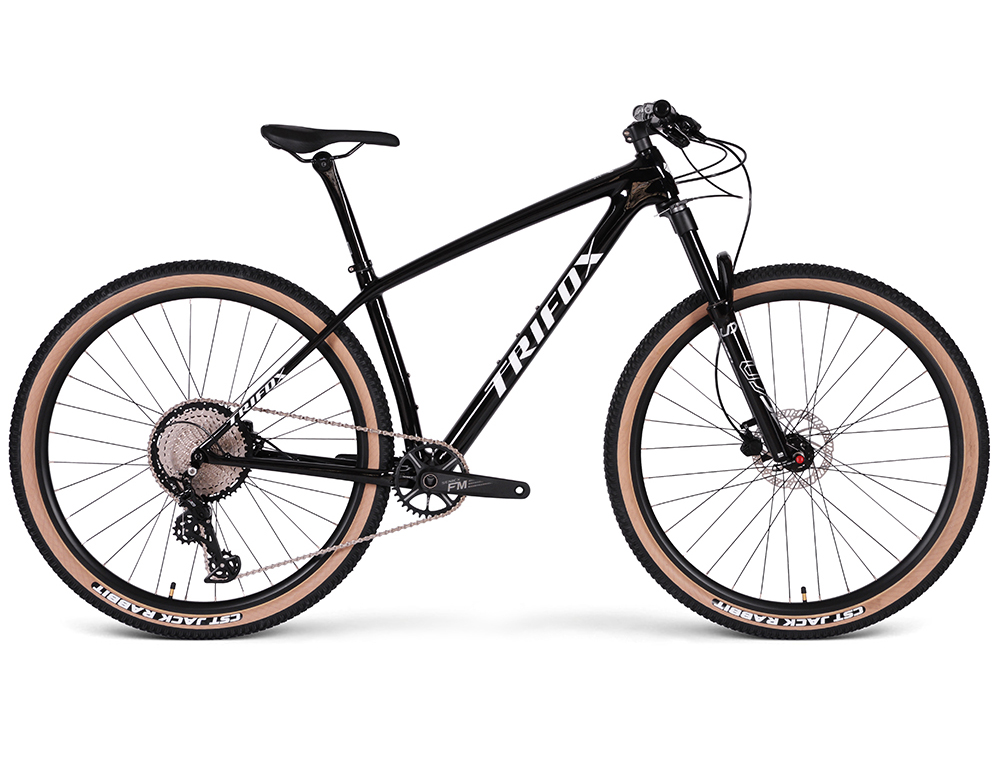
Overall, choosing an ultra light hardtail MTB with a carbon frame like the SDY20 offers numerous benefits, including enhanced performance and comfort, making it a worthy companion for your next mountain biking adventure.
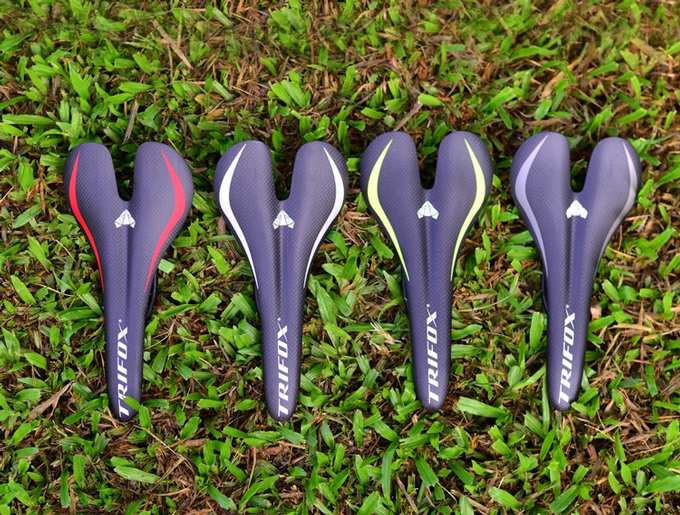
For cyclists, achieving the perfect balance of comfort and performance is essential, and one of the most critical components in this pursuit is the cycle saddle. The right saddle can drastically enhance your riding experience, transforming long, arduous rides into enjoyable journeys.
Choosing the right cycle saddle starts with understanding its impact on comfort and performance. A high-quality saddle is designed to minimize discomfort and maximize efficiency, making each ride more pleasurable and less taxing on your body. Features such as ergonomic design, lightweight construction, and adjustability are key aspects to consider.
An ergonomic design is paramount for reducing pressure on sensitive areas, ensuring that your weight is evenly distributed. This helps prevent numbness and discomfort during long rides. Additionally, saddles made from lightweight materials like carbon not only contribute to a lighter bike overall but also offer durability and strength, crucial for withstanding the stresses of cycling.
The Trifox CS100 carbon bike saddle exemplifies these high-quality features. Its agreeable design prioritizes rider comfort with contours that support your natural posture, reducing strain on the back and hips. Crafted from carbon, the CS100 is incredibly light, helping you maintain speed and agility without compromising on durability.
Adjustability is another essential feature of a top-tier saddle. Being able to fine-tune the saddle's position allows you to find the perfect alignment for your riding style and body type, further enhancing comfort and performance. This customization ensures that each ride is tailored to your needs, reducing the likelihood of saddle sores or other discomforts.
When selecting a saddle, it's important to consider your individual needs and preferences. Factors such as the type of cycling you engage in, your riding position, and your body measurements should all play a role in your decision-making process. Testing different saddles and consulting with cycling professionals can offer valuable insights into finding the perfect fit.
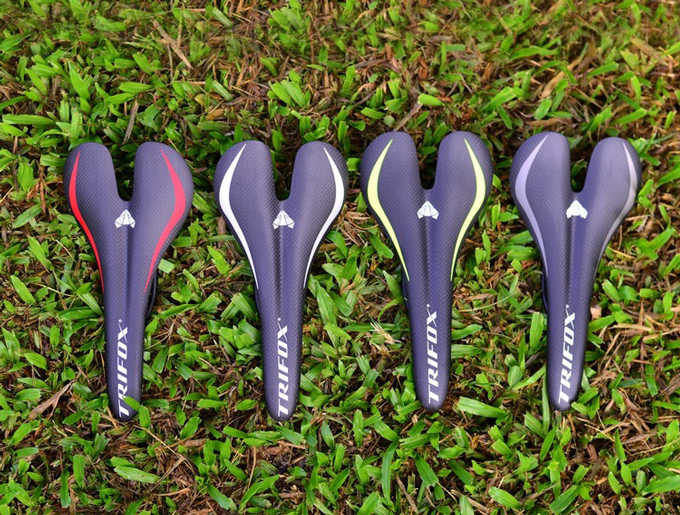
In conclusion, investing in a high-quality saddle like the Trifox CS100 can significantly enhance your cycling experience. By choosing a saddle that prioritizes comfort, leveraging ergonomic design and lightweight materials, you can improve your performance and enjoyment on every ride. Consider upgrading your saddle to experience the difference a well-chosen component can make. Happy cycling!
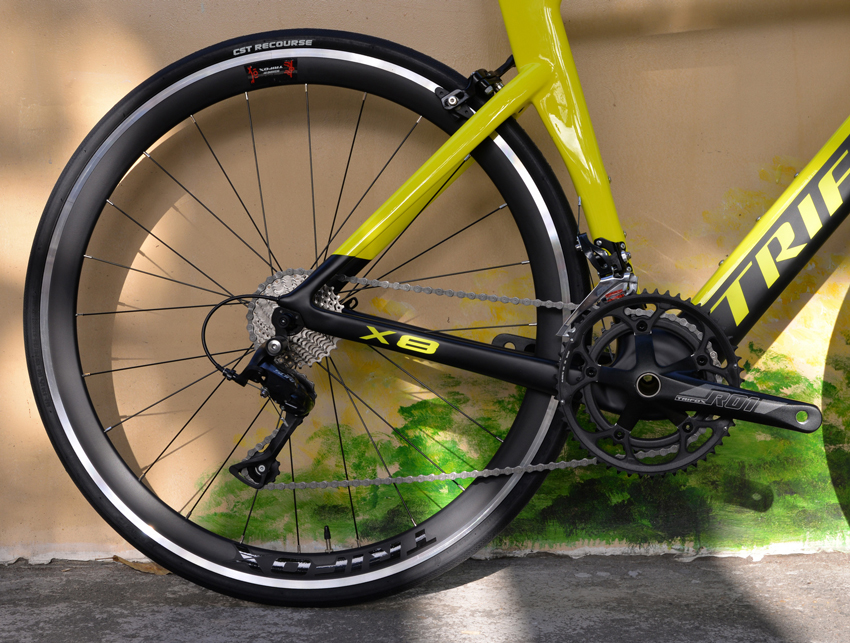
In the world of cycling, speed enthusiasts and competitive racers are always on the hunt for equipment that can give them an edge. Among the many components that can impact performance, aero road wheels stand out as a potentially transformative upgrade.
But are they the secret to boosting your cycling speed? Let's delve into the benefits of these wheels and explore how they can enhance your ride.
Aero road wheels are specifically designed to reduce aerodynamic drag, which is the force opposing a cyclist's forward motion. By minimizing this resistance, aero wheels help maintain higher speeds with less effort.
The key to their effectiveness lies in their deep-section rims, which cut through the air more efficiently than standard wheels. This design reduces the vortex effect, where turbulence is created behind the wheel, slowing you down. Instead, the streamlined shape of aero wheels allows for smoother airflow, enabling cyclists to conserve energy and maintain momentum.
The use of carbon fiber in aero wheels further enhances their performance. Carbon fiber is renowned for its lightweight and strong properties, making it an ideal material for wheel construction.
Trifox's carbon road bike wheels exemplify these advantages, providing a sturdy yet featherlight option that significantly improves acceleration and climbing efficiency. The decreased weight means less rotational mass, allowing for quicker acceleration and easier maintenance of high speeds.
For competitive cyclists, every second counts. Aero road wheels offer a measurable advantage in time trials and race situations, where slicing through the air can mean the difference between winning and losing. The aerodynamic benefits become even more pronounced at higher speeds, making these wheels a coveted choice for those looking to improve their competitive edge.
However, it's important to choose the right wheelset for your specific cycling goals. While aero wheels shine on flat courses and in windy conditions, riders who frequently tackle steep climbs may prioritize weight over aerodynamics. Thus, understanding your riding style and the typical terrain you encounter is crucial when selecting the perfect wheelset.

Aero road wheels can indeed be a game-changer for speed enthusiasts. By reducing drag and utilizing lightweight carbon construction, they offer an effective means to boost cycling speed and performance.
Whether you're a dedicated racer or a casual rider seeking to elevate your cycling experience, investing in a quality set of aero wheels like those from Trifox could be the key to unlocking new levels of speed on the road. Ultimately, these wheels provide more than just an aerodynamic advantage—they offer the potential to transform how you ride and race.
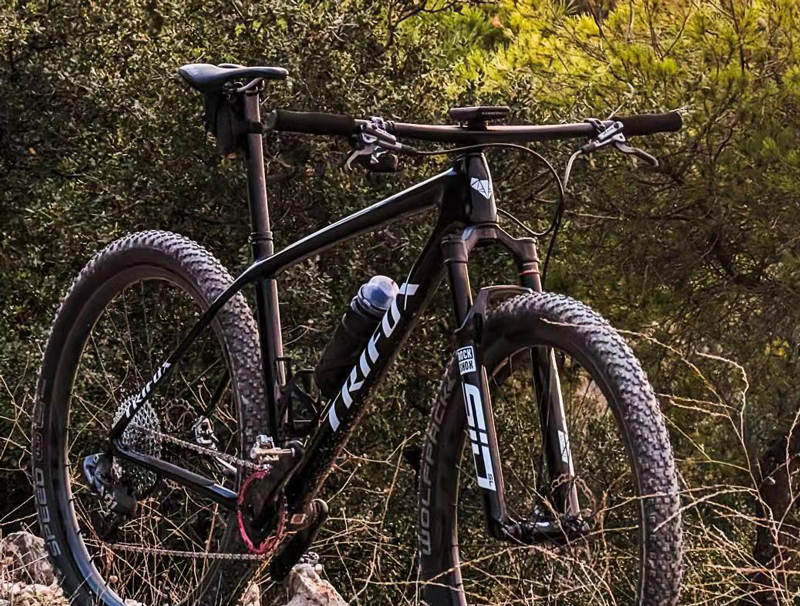
Choosing and installing the right bike bracket is crucial for ensuring optimal performance and safety on any cycling adventure. The bike bracket, often referred to as the bottom bracket, is a critical component connecting the bike's crankset to its frame, allowing for smooth and efficient pedaling. Selecting the appropriate bracket not only enhances the cycling experience but also prolongs the life of your bike.
When choosing a bike bracket, compatibility is key. The first step is to identify the type of bike frame and components you have. Different frames require specific bracket types, such as threaded or press-fit, and understanding your bike's specifications is essential.
Always refer to your bike's manual or consult with the manufacturer to ensure compatibility. For example, Trifox Bike, known for their high-quality carbon bike frames, provides detailed guidelines on the suitable brackets for each of their models, ensuring a perfect fit and maximum performance.
Once you have identified the right bracket, installation is the next step. Here's a step-by-step guide to help you through the process:
1. Gather Tools: Ensure you have the necessary tools, including a bottom bracket tool, torque wrench, and grease.
2. Remove the Crankset: Begin by removing the pedals and crankset from the bike frame. This may require a crank puller tool depending on your bike model.
3. Clean the Frame: Thoroughly clean the bottom bracket shell to remove any debris or old grease that could affect the installation process.
4. Install the Bracket: Apply a light layer of grease to the threads, if applicable. Use the bottom bracket tool to carefully screw in the bracket, ensuring it is tight but not overtightened, as this can damage the threads.
5. Reattach the Crankset: Once the bracket is securely in place, reattach the crankset by reversing the removal process. Ensure all components are tightly secured.
Common mistakes to avoid include neglecting to check compatibility, insufficient cleaning of the bracket area, and over-tightening the bracket, which can lead to damage.
With expertise in the field, Trifox Bike offers a range of compatible bike brackets designed to work seamlessly with their carbon frames. Their commitment to quality ensures that each component meets high performance standards, providing cyclists with a reliable and efficient riding experience.
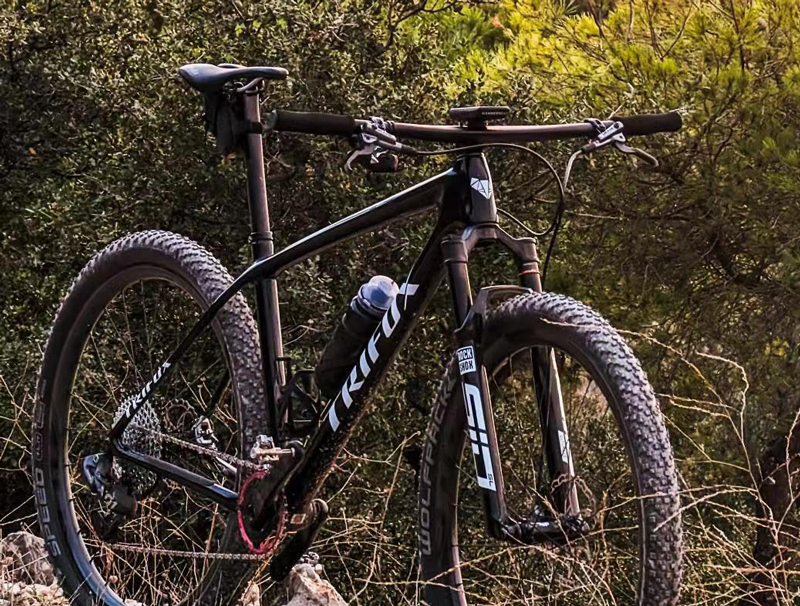
By following these tips and steps, cyclists can confidently choose and install the right bike bracket, enhancing their bike's performance and longevity.
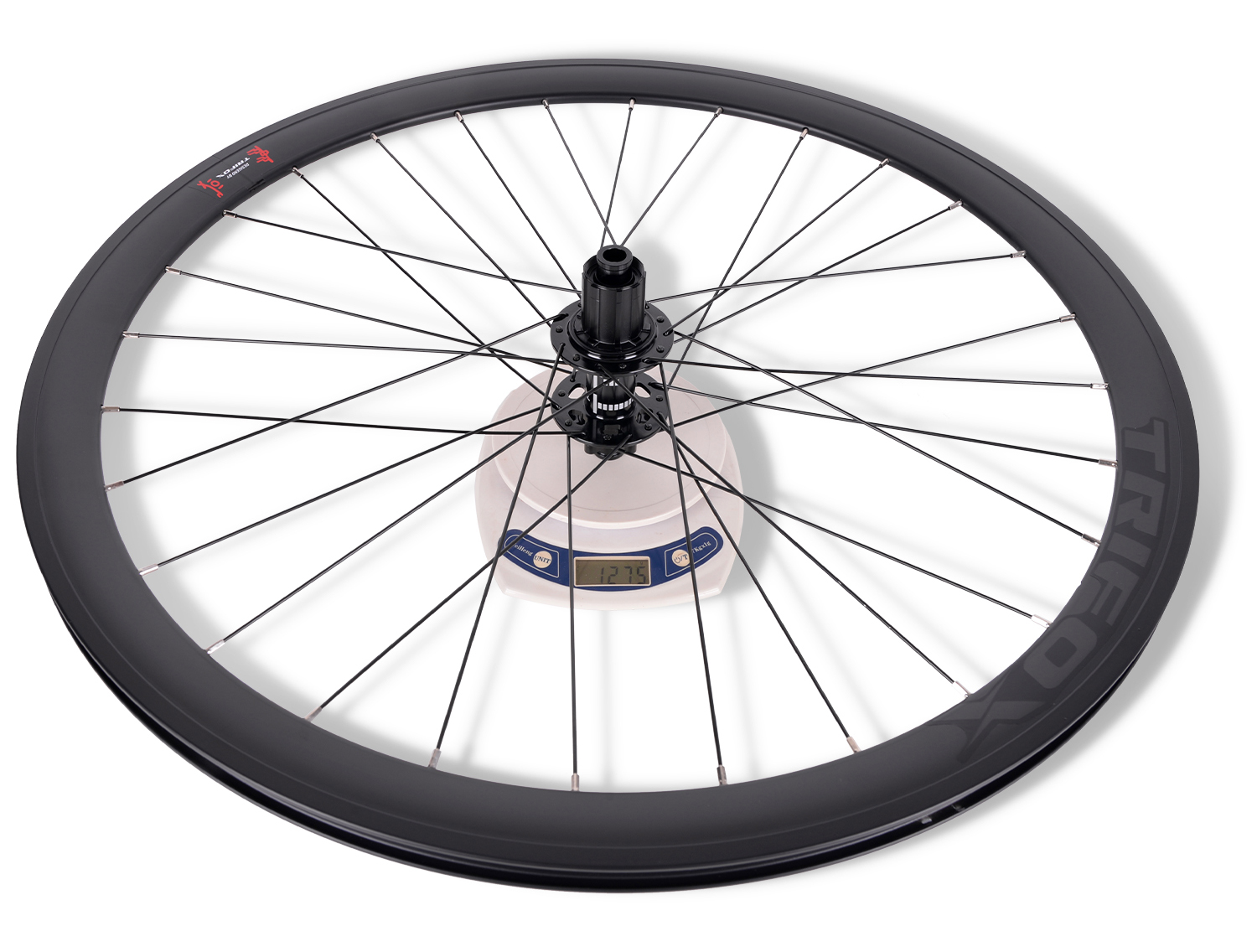
Upgrading your road bike's wheelset can significantly enhance your cycling performance, providing not only improved speed and efficiency but also better handling and ride quality. A well-chosen wheelset upgrade can be one of the most impactful modifications you make to your bike, transforming your riding experience.
Benefits of Upgrading Your Wheelset:
1. Increased Speed and Efficiency: Lighter wheels reduce rotational weight, making it easier to accelerate and maintain speed. Aerodynamic wheelsets minimize air resistance, allowing for smoother, faster rides.
2. Enhanced Ride Quality: High-quality wheelsets offer better responsiveness and smoother handling. They can absorb road vibrations more effectively, leading to a more comfortable ride over long distances.
3. Improved Durability: Upgrading to a robust wheelset ensures greater reliability and longevity, especially crucial for riders tackling various terrains and conditions.
Key Factors to Consider When Choosing a New Wheelset:
1. Material: Wheelsets are commonly made from carbon or alloy. Carbon wheels are lighter and more aerodynamic, ideal for competitive cyclists. Alloy wheels, such as those from TRIFOXBIKE, offer a great balance of performance and affordability, making them a favorite among many cyclists.
2. Rim Depth: Deeper rims provide aerodynamic benefits, making them suitable for flat terrains and time trials. However, they may be susceptible to crosswinds. Shallower rims are more versatile and handle better in varied conditions.
3. Spoke Count and Pattern: More spokes generally mean a stronger wheel, which is beneficial for heavier riders or rough terrain. The pattern and tension affect wheel strength and aerodynamics.
4. Compatibility: Ensure the new wheelset is compatible with your existing bike components, such as the cassette and brakes (rim or disc).
Tips for Installation and Maintenance:
1. Professional Installation: Have your new wheelset installed by a professional or follow detailed instructions to ensure proper alignment and tension, which are critical for performance and safety.
2. Regular Maintenance: Keep your wheels clean and free of debris. Regularly inspect for any signs of wear or damage, and ensure spokes are properly tensioned.
3. Tire Pressure: Maintain optimal tire pressure for your new wheels to enhance performance and prevent flats.

TRIFOXBIKE's alloy road wheels are an excellent example of a high-quality upgrade. Designed for reliability and performance, these wheels can elevate your cycling experience significantly. To explore TRIFOXBIKE's alloy road wheels and find the perfect fit for your cycling needs, visit their product page: TRIFOXBIKE Alloy Road Wheels.
By carefully selecting and maintaining your upgraded wheelset, you can enjoy a substantial boost in your road biking performance, making every ride faster, smoother, and more enjoyable.
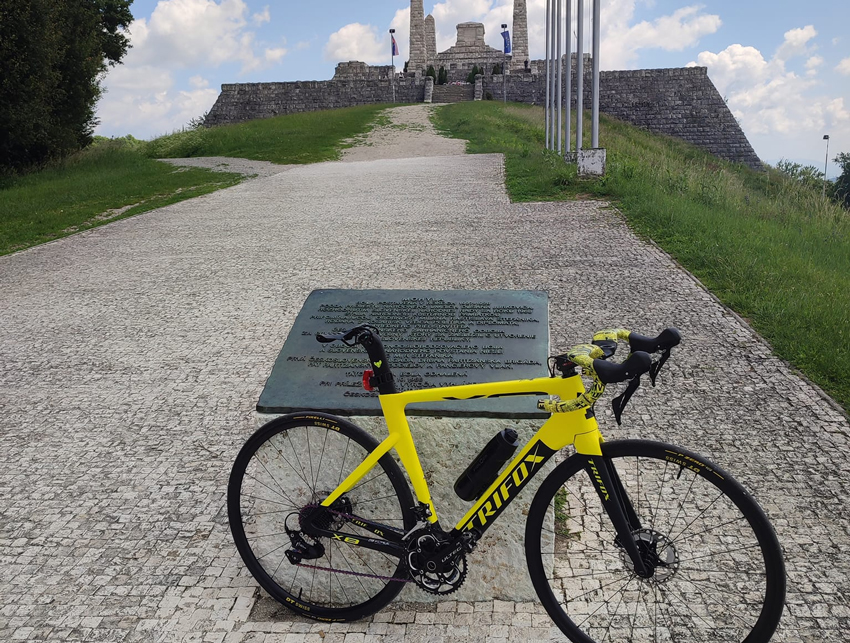
Selecting the perfect XS frame road bike is crucial for cyclists who seek efficiency, comfort, and optimal performance.
The frame size is one of the most important factors affecting how well you can ride, especially for those with smaller builds. Here's how to ensure you choose the right XS frame for an efficient ride.
1. Importance of Frame Size:
The frame size directly impacts your cycling efficiency. An XS frame is designed to cater to shorter riders, offering better balance and control. A well-fitted frame ensures that your energy is effectively transferred to the bike, enhancing speed and reducing fatigue over long rides. Riding an incorrectly sized bike can lead to discomfort and inefficient pedaling, making size selection vital.
2. Tips for Choosing the Right XS Frame:
Measure Your Inseam: Start by measuring your inseam to determine the correct standover height for the bike. This ensures you can comfortably mount and dismount the bike.
Consider Reach and Stack: Ensure the reach (distance from the saddle to the handlebars) and stack (height of the handlebars) are appropriate for your height. This affects your riding posture and comfort.
Test Ride: If possible, test ride different models to see which frame geometry feels most comfortable. Pay attention to how the bike handles and your ease of maneuverability.
Consult Experts: Seek advice from cycling experts or bike shop professionals who can provide personalized recommendations based on your body dimensions and riding style.
3. Impact on Comfort and Performance:
A properly fitted XS frame enhances comfort by reducing strain on your back and neck, allowing for better focus and endurance. It also improves performance by ensuring you can maintain an aerodynamic position, especially crucial for long-distance road cycling. An efficient ride means you can enjoy cycling longer and faster with less effort.
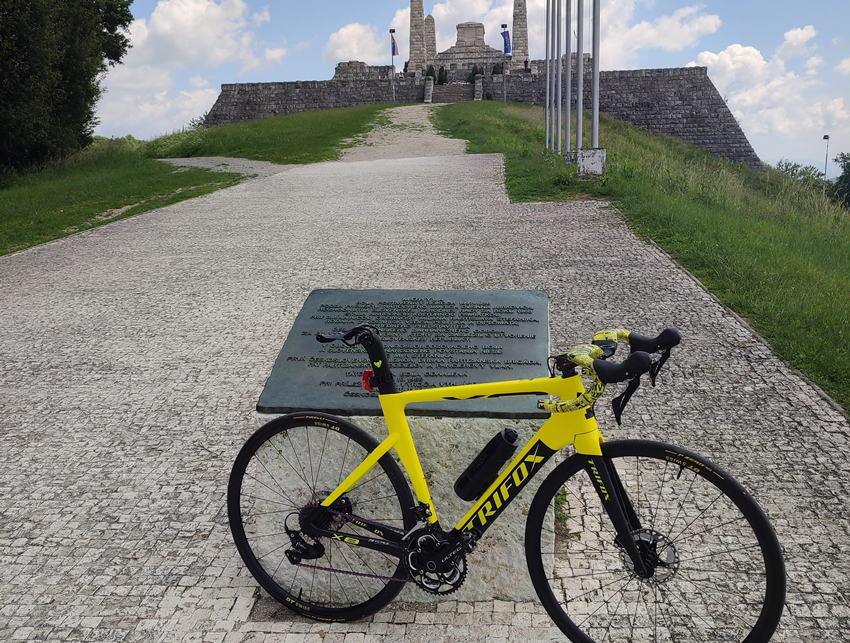
TRIFOXBIKE offers an impressive range of XS frame road bikes that cater to the needs of smaller riders. Their bikes are designed with precision, focusing on lightweight materials and advanced ergonomics to ensure maximum efficiency and comfort. To explore TRIFOXBIKE's selection of road bikes and find the perfect fit for an efficient ride, visit their product page: TRIFOXBIKE Road Bikes.
By choosing the right XS frame road bike, you can achieve a harmonious balance between speed, comfort, and performance, making your cycling experience both enjoyable and efficient.

























































